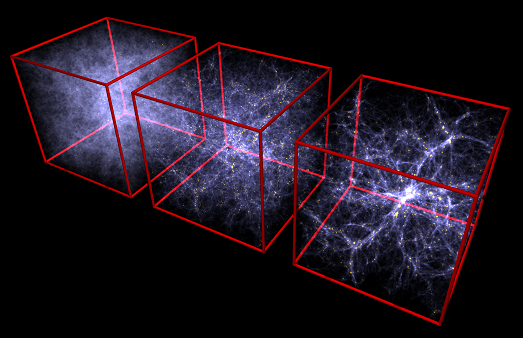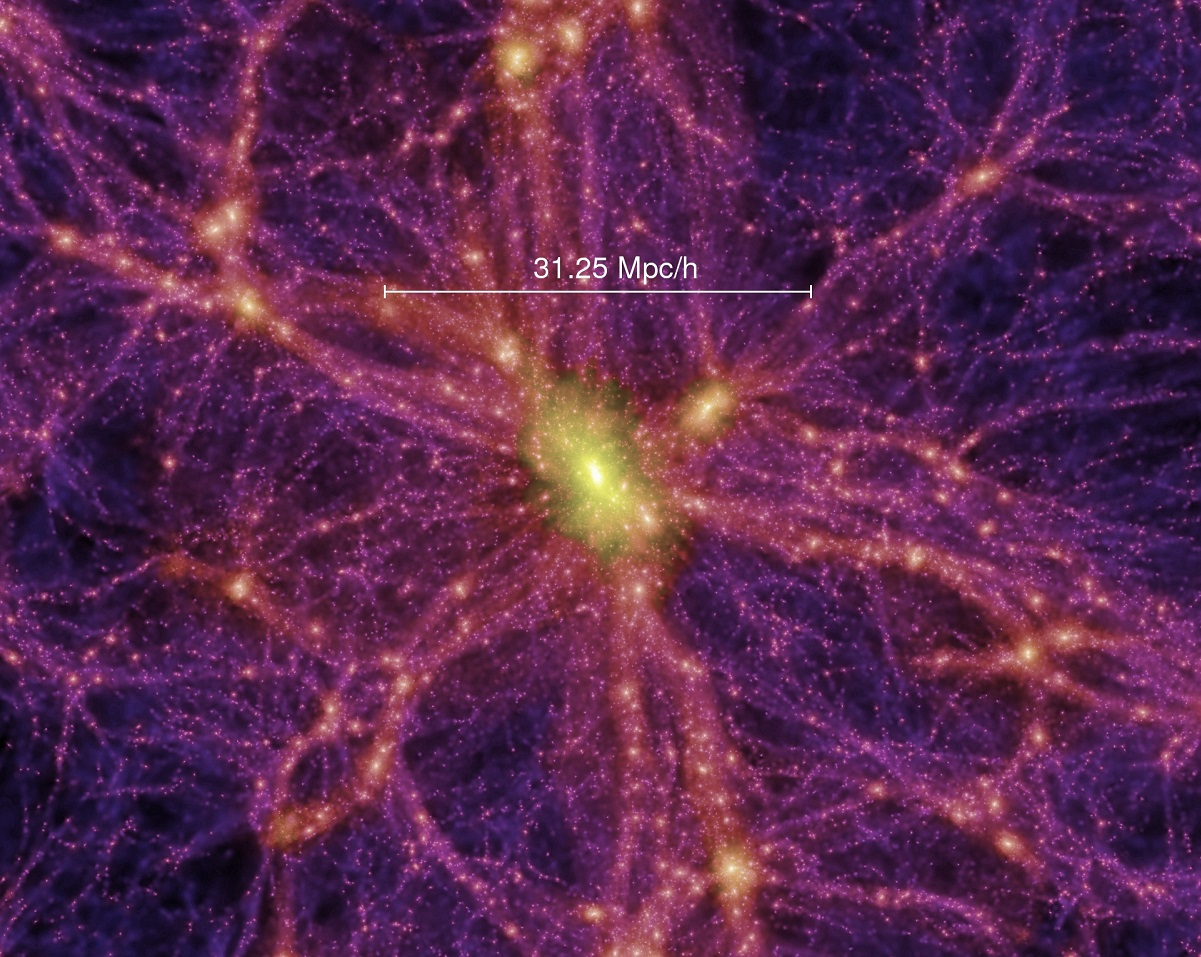
Simon D M White was born in 1951 in Ashford, Kent, UK and is currently the Director of the Max Planck Institute for Astrophysics, Germany. He received his BA degree in Mathematics and his PhD in Astronomy from the University of Cambridge, UK in 1972 and 1977 respectively. He was a Lindemann Fellow at the University of California (UC), Berkeley, USA (1977–1978) and Research Fellow at the University of Cambridge (1979–1980). He then returned to UC Berkeley as Adjunct Assistant Professor (1981–1984). He joined the University of Arizona, USA, where he was successively Associate Professor/Astronomer (1984–1987) and Professor/Astronomer (1987–1991) at the Steward Observatory. He served as Director at the European Association for Research in Astronomy from 1992 to 1994. Since 1994, he has been a Director of the Max Planck Institute for Astrophysics. He is a Fellow of the Royal Society of London.

In the evolutionary history of the Universe, all matter carrying mass interact through the gravitational force to form structures. To understand this process, scientists rely on supercomputers to simulate the motion of a large number (N) of "particles" under their mutual gravity. "Particle" here does not mean the elementary particles that we often mention. It is simply a unit used in the computer simulation. One "particle" may be a parcel of matter with the mass equivalent to a galaxy, depending on the required scale of the simulation. Over the past four decades, Simon D M White, together with an exceptional group of collaborators and students, have developed N-body computer simulations as a new tool of extraordinary power, yielding fundamental insights into cosmic structure formation.
In post-processing of this simulation, White, Springel and their colleagues also added models of the small-scale physical processes that govern the evolution of normal matter within the dark matter halos. The formation of stars in galaxies results from a competition between gas cooling and the ejection of matter from the galaxies through the action of supernovae and massive black holes. These semianalytic methods were first proposed by White and Frenk in 1991, and their current predictions for galaxy properties match a remarkable variety of observations, such that these simulations are beginning to approach the age-old dream of "creating the Universe in a computer".

Image credit: Springel et al. (Virgo Consortium); Max-Planck-Institute for Astrophysics

Image credit: Springel et al. (Virgo Consortium); Max-Planck-Institute for Astrophysics

Image credit: Springel et al. (Virgo Consortium); Max-Planck-Institute for Astrophysics

Image credit: Springel et al. (Virgo Consortium); Max-Planck-Institute for Astrophysics

Image credit: Springel et al. (Virgo Consortium); Max-Planck-Institute for Astrophysics

(Left): The large-scale structure of the Universe observed by Sloan Digital Sky Survey (SDSS). Earth is at the centre, and each point represents a galaxy. The regions between the wedges are not observable due to the obstruction by dust in our own Galaxy.
Image credit: Sloan Digital Sky Survey
(Right): The large-scale distribution of normal matter in the Universe simulated by the "Millennium simulation". It fits very well with the observational data from SDSS.
Image credit: Volker Springel; Max-Planck-Institute for Astrophysics
In the present-day Universe, many structures including galaxies, groups and gigantic clusters of galaxies, and the cosmic web of gas and galaxies connecting the largest clusters, have densities significantly higher than the average density of the Universe. The formation of this kind of structures is highly nonlinear. N-body simulation is extremely useful in analysing the evolution of nonlinear structures.
White's research has investigated almost every aspect of the current paradigm of nonlinear structure formation. Scientists found that many clusters of galaxies appear in a lumpy structure. Already in 1976 he conducted numerical experiments showing that extensive sub-clustering was expected during gravitational collapse of normal matter, plausibly explaining such phenomenon. In 1978, White and Rees were the first to suggest that galaxies formed by the collapse of normal matter gas to the centres of much larger halos composed of dissipationless dark matter of unknown nature.
In 1976, Simon D M White published an article on a simulation containing 700 particles which showed the evolution of a large cluster mass of normal matter. Smaller subclusters emerged at the early phase. Figure a - c were the projected distribution of the particles in the model cluster at three stages: (a) the initial stage; (b) merging of subsclusters as the simulation evolved; and (c) forming large subclusters. The lumpy structure of the large subclusters could be compared with observed superclusters of galaxies.
Image credit: Simon D M White
These two false-colour images compare the distribution of normal matter (left in red, using visible light) with dark matter (right in blue, using gravitational lensing technique) in the Universe. The brightness of clumps corresponds to the density of mass. The similarity between the lumpy distribution of normal matter and dark matter provides an insight on how the structure of the Universe evolves.
Image credit: NASA, ESA, and R. Massey (California Institute of Technology)
In the early 1980s, extensive investigations were conducted on neutrinos as the main candidate of dark matter. White and his collaborators Davis, Efstathiou, and Frenk carried out the most influential early numerical studies of nonlinear structure formation in a realistic cosmological model. They showed that if neutrinos have enough mass to account for most of dark matter, then their relativistic motion (motion with a speed comparable to the speed of light) in the early Universe would have inhibited the growth of structures such as galaxies, contradicting observations. This deduction sets an upper limit on neutrino masses — one of the first times that cosmology produced important new constraints on the properties of elementary particles.
As an alternative to neutrinos, White and his collaborators argued that the dark matter was probably "cold", i.e., the initial velocity dispersion of the dark-matter particles relative to the overall expansion of the Universe was negligible, or simply speaking, that the dark-matter particles move much slower than the speed of light. Some years later, Navarro, Frenk and White showed from N-body simulations that the relation between density of cold dark matter and its radius in the halo is described remarkably well by a simple two-parameter empirical law now known universally as the NFW (Navarro–Frenk–White) profile.
Inflation is a widely accepted theory in cosmology. It requires the density of the Universe to be equal to the critical density, so that the geometry of the Universe is flat. In the early 1990's, scientists believed that the matter density including normal matter density and dark matter density was equal to the critical density. In 1993, White, Evrard, Frenk and Navarro noted that the ratio of normal matter to dark matter in clusters of galaxies is different from the ratio expected, and showed that the matter density in the Universe is significantly less than the critical density. Therefore, an opportunity was provided for scientist to review the role of cosmological constant.
The problem of determining the origin of galaxies and other structures in the Universe has occupied cosmologists for a century. The remarkable advances in our theoretical understanding, with White as a leader over several generations of increasingly realistic modelling, will form the foundation for even more sophisticated work in the decades to come, which will finally allow a detailed understanding of how these structures came to be. These outstanding achievements make White a fitting recipient of the 2017 Shaw Prize.
Recent precision observations of the cosmic background radiation and the spatial distribution of galaxies, the distribution of intergalactic gas, and many other phenomena have verified the validity of the cosmological standard model. Powerful telescopes and surveys are probing the predictions of White and his colleagues with unprecedented accuracy, and much of the scientific motivation of billion dollar ground- and space-based telescopes that are now being planned or are under construction is to further test our understanding of cosmic structure formation and what it tells us about the age, size, geometry, content, and origin of the Universe, and in addition what it tells us about fundamental physics.


